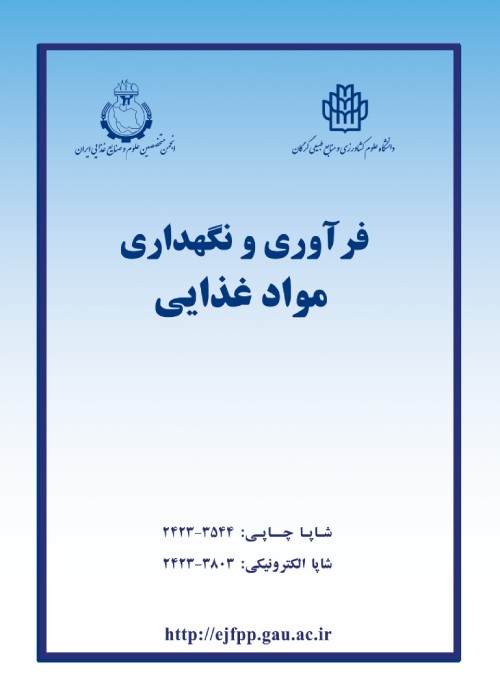Fabrication of polyvinyl alcohol/chitosan /sodium caseinate nanofibers using electrospinning
Electrospinning is used to produce multi compound nanofibers with enhanced physicochemical properties. As a promising technology, it is considered as the most potent methods for industrial development due to its humble mechanism and several applicable polymers. Accordingly, the present study investigated electrospinning of three polymers including polyvinyl alcohol / Chitosan / Sodium caseinate to bring enhanced thermal resistance multi compound nanofibers.
First, the operating factors including needle to collector distance, polymer concentration, and high-voltage were evaluated after performing various of preliminary experiments. Then, based on the D-Optimal mixture design (Design of experiments (DOE), Ver 10), electrospinning was carried out at a distance of 12 cm, voltage of 16 kV, and a flow rate of 0.5 ml/h with different ratios of three polymeric solutions (Polyvinyl alcohol, Chitosan, and Sodium Caseinate). The morphology and diameter of nanofibers were investigated using scanning electron microscopy images, and according to the results, three samples were selected based on differences in diameter (low, medium, and high). Therefore, the physicochemical properties of these samples plus a chitosan-free sample were investigated using X-ray diffraction (to determine crystallographic structure), Fourier transform infrared spectroscopy (to observe chemical changes) and Thermogravimetric analysis (to determine the nanofiber's thermal stability).
Nanofibers of Polyvinyl alcohol / Chitosan / Sodium Caseinate were successfully electrospun with mean diameters in the range from 121 nm to 192 nm. The nanofibers 622 (i.e. 60% polyvinyl alcohol, 20% chitosan and 20% sodium caseinate), 811 (i.e. 80% polyvinyl alcohol, 10% chitosan and 10% sodium caseinate), and 721 (i.e. 70% polyvinyl alcohol, 20% chitosan and 10% sodium caseinate) exhibited the thickest, the medium size, and the thinnest sample, respectively. The observed decrease of peak intensity in nanofibers X-ray diffraction pattern was attributed to the sharp decrease in the semi-crystalline structure of Polyvinyl alcohol in combination with chitosan and Sodium Caseinate polymers, which is due to the formation of hydrogen bonds and crystalline-amorphous phase compatibility. The Fourier transform infrared spectroscopy confirmed that all the polymers were fully dispersed in the nanofibers. The Thermogravimetric analysis results also showed that despite the higher initial decomposition temperature of chitosan free sample (i.e. 703), the presence of chitosan improves thermal stability, resulted in thermal changes occurring over a wider temperature range.
Owing to the successful electrospinning and the appropriate physicochemical properties of the nanofibers as with proper thermal resistance, it can be propounded to employ chitosan, Polyvinyl alcohol, and specially Sodium Caseinate electrospun nanofibers for implementing in sever thermal circumstances and nanoencapsulation of bioactive compounds (like the ones with hydrophobic nature).
- حق عضویت دریافتی صرف حمایت از نشریات عضو و نگهداری، تکمیل و توسعه مگیران میشود.
- پرداخت حق اشتراک و دانلود مقالات اجازه بازنشر آن در سایر رسانههای چاپی و دیجیتال را به کاربر نمیدهد.



